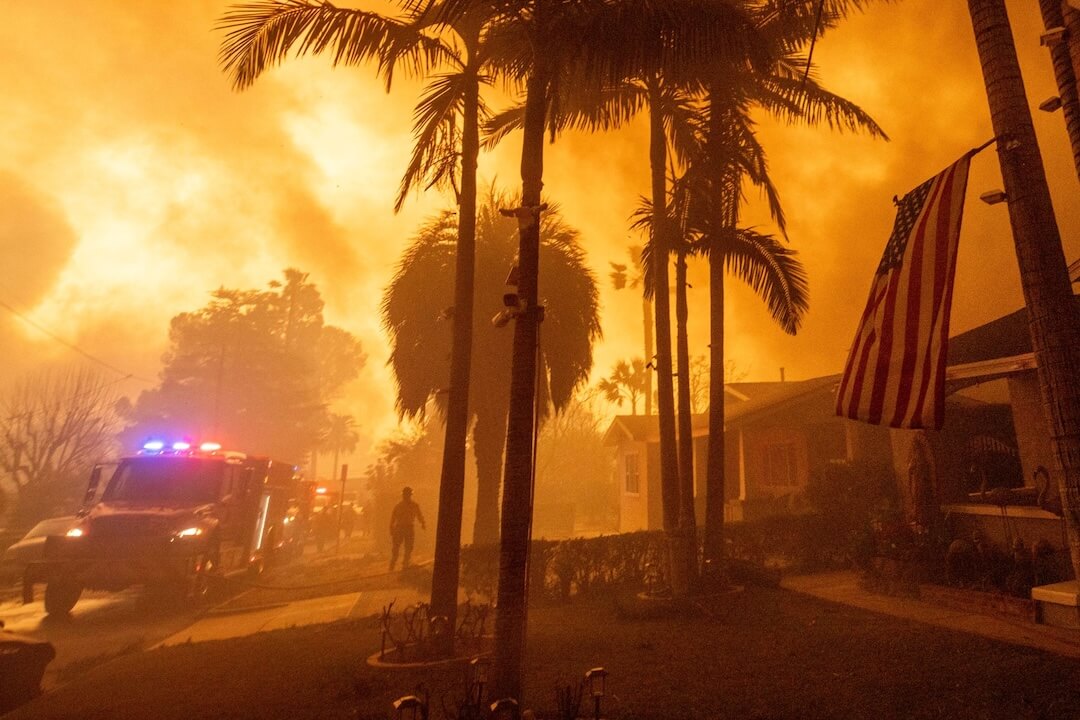The Katrina Project Site was an interesting look at Hurricane Katrina by a group of students at the P.I. Reed School of Journalism, West Virginia University. We asked how the project came about and what went into putting it together. The following is their story:
By Assistant Professor Dana Coester, Assistant Professor Joel Beeson and Assistant Professor Bonnie Stewart of the P.I. Reed School of Journalism, West Virginia University.
Disaster 101: A multi-media class becomes a real-world reporting experiment.
By Joel Beeson, multimedia director and visual journalism assistant professor
Three weeks into the fall semester, Hurricane Katrina hit and out went my painstakingly planned multimedia syllabus. The first week we had a class discussion to define multimedia. The subsequent weeks would be dedicated to teaching audio recording and editing; video recording and editing; and digital photography in a logical, step-by-step progression to the Holy Grail — a three-minute semester project of the student’s choosing.
Instead, Katrina hit and student teams took mini-disc recorders, pads of paper and pencils, digital cameras and mini-DV camcorders and began to interview and photograph evacuees, volunteers and staff. The class became the ultimate “learn by doing” laboratory.
We learned (and still are learning) about teamwork and about which parts of a story are best told by a particular medium. One of the overwhelming lessons of this “new” media approach is that technology drives the learning curve upward, so that teachers have to be able to focus on the priorities. In multimedia, this means the first order of business is audio quality. The audience will suffer poor images if the audio is good, but the reverse is not true.
While good microphones and recorders are essential, for the student/faculty teams, this meant unlearning some of the working conventions of print. Students were dismayed when they returned from the field and listened to interviews in which other team members were chatting over the interviewee’s narrative. While a conversational approach may facilitate a great print interview, it can render a multimedia recording useless.
Broadcast and print students and faculty also joined the effort, making teamwork and flexibility paramount. Two graduate students and one undergraduate student were given leadership roles, which added a much-needed layer of organization.
A final lesson from the real-life chaos of this semester is to use all the resources of the Web to help you and your students survive the disaster. Show them lots of good examples. Here is a list of some of the best resources for teaching multimedia:
Multimedia and Convergence Reporting
http://journalism.berkeley.edu/multimedia/
A very useful hands-on site sponsored by The Western Knight Center for Specialized Journalism program, UC Berkeley and USC journalism programs.
Multimedia Journalism: Joe Weiss
http://www.joeweiss.com/
Weblog for the advancement of multimedia storytelling.
Interactive Narratives
http://www.interactivenarratives.org/
Andrew DeVigal’s Interactive Narratives is an exhaustive site with examples, reviews and all sorts of helpful resources. There are three areas to the site: weblog, database of sites and links and resources.
The Photography Channel
http://www.photographychannel.tv/
David Snider’s “Photographic storytelling for the modern media” has wonderful examples of multimedia stories.
Final Cut tutorials
http://gust.tv/tutorials/finalcutexpress/
We use Final Cut Express in the classroom. This is a good basic tutorial.
With support from Dean Maryanne Reed, six journalism professors and seventeen student photographers, broadcasters and print reporters gathered stories and began grappling with how to publish this work.
We decided on a website.
From the beginning we confronted the challenges that arise from working without a model. Each meeting was collision of editorial conventions and turf-based vocabulary as we tried to translate print notions or broadcast ideas into repurposed content. We kept using terms such as “sidebar” or “photo essay” or “package” in our story planning sessions. Our multimedia expert, Assistant Professor Joel Beeson grew frustrated with our stubborn reliance on the terms we each pulled from our own insular backgrounds of print, broadcast and design. “There is no such thing as a photo essay here. Do you mean a web gallery? Do you mean a multimedia slideshow?”
Googling “convergence” for some basic reference points didn’t help. We were both discouraged and emboldened to discover a lack of models on which to base our project. So we agreed to start from scratch, discarding our territorial baggage, our clumsy flowcharts and our pseudo vocabulary. The project became more than a convergence of media and conventions. It became a convergence of storytelling possibilities.
That’s when it got messy…and exciting.
We knew that we did not have the resources to create a site for breaking news. We had to design a site that had staying power. This is where “convergence” began to happen in the broadest sense. The opportunities presented by the media tools at our disposal – print, broadcast, multi-media, web interactivity — allowed us to develop a different kind of communications landscape. We didn’t abandon traditional journalistic storytelling — we simply became empowered to practice the journalism with more dimension.
We developed the site in a manner that allows us to explore the complex relationships that can emerge between different sources of content and when different media come into play. So a process that might easily have been an assemblage of technological gimmicks became the opportunity to create an intricate network of context that we hope enriches our storytelling.
It’s not that we did this fluidly. In many ways the up-front development and design of the site with empty links and floating titles became the anchor for the project’s content. Being able to visualize the interactive landscape revealed the potential relationships between content. The mockup became our content map and allowed a diverse group of journalists to negotiate and produce multi-dimensional content.
As immersion goes, this has been a lesson in practicing, learning and teaching convergence by the seat of our pants. Although our students are indisputably more adept than we are at multi-tasking with multimedia, we were shocked to find that as creators of content, they are stubbornly old-fashioned and linear. In retrospect this shouldn’t have been surprising. At its core, the project did not need tech-savvy whiz kids. Rather it needed what good journalism always needs: thoughtful, engaged and versatile storytellers.
Consider what this project asks of our students. They can’t just pitch ideas for a print story to an editor or turn in a video clip to a producer— skills and practices they are only beginning to learn based on traditional models. They are being asked from the onset to imagine their story in its fullest potential: Where does it overlap with other content? How can their story be told with different voices, different perspectives and using different media? How do design decisions construct and manage the context of their ideas? How can their story be rendered with layers of meaning across multiple links? These are the questions that allow convergence projects to become more than the sum of their parts.
There is no way around requiring our students to understand the technological possibilities in order to visualize and express the storytelling possibilities. But in the end, they also have to understand how to practice as journalists in the broadest sense and without boundaries.
Project director and assistant professor Bonnie Stewart offers tips for journalism students at the Katrina Project Site: http://katrinaproject.journalism.wvu.edu/Background/educators.htm





